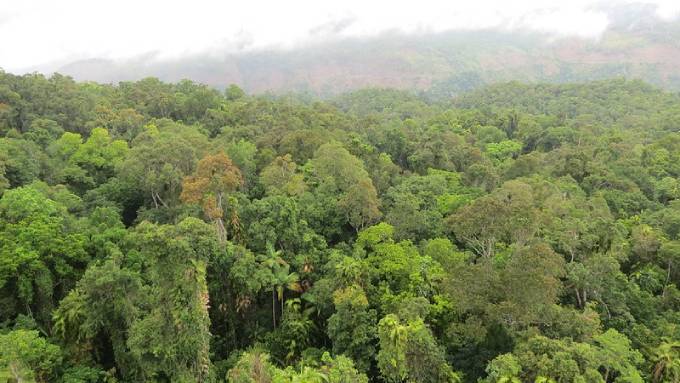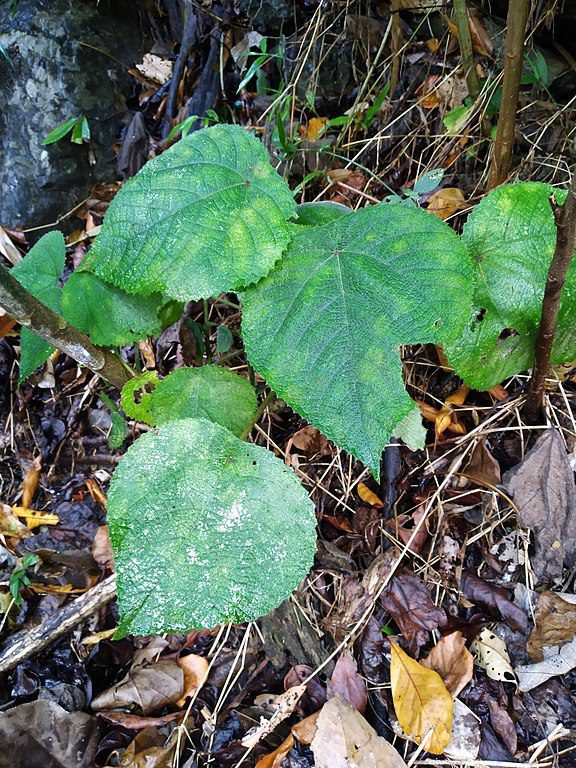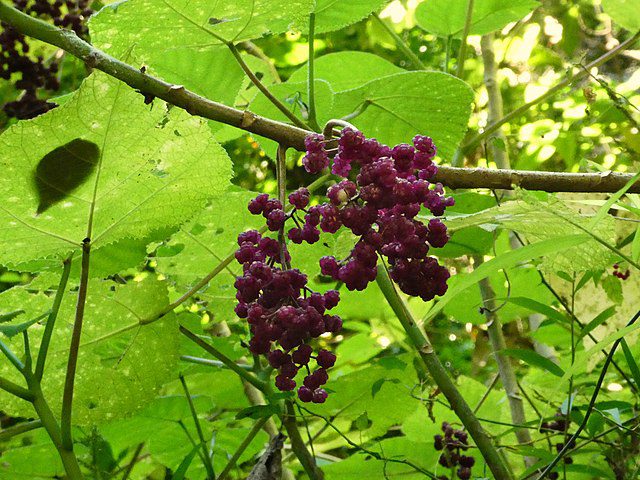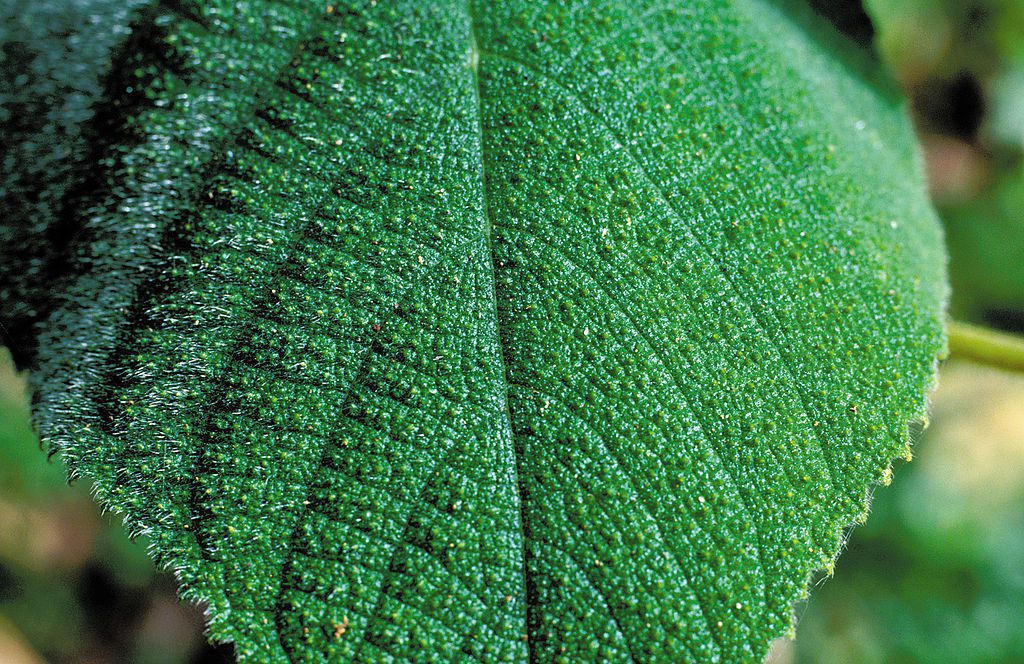Gympie-gympie. The words roll off your tongue in the typical fashion of other words from the same country. Which country, you ask? Think billabong, boomerang, and crikey. If you still don’t have it, no worries, mate! Let us tell you. Gympie-gympie is native to Australia and, like the rest of Australian nature, it packs quite a punch.
Meet the Gympie-gympie stinging tree
Well, we hope you never actually meet this tree, and if you do, don’t shake hands with it. Let’s introduce you properly. Botanists call it Dendrocnide moroides, which is quite a mouthful. So the locals call it Gympie-gympie or the suicide plant.
It obtained this distinguished nickname from legends that describe a lingering, excruciating pain from its sting, which drives people to kill themselves.
This shrub-like tree even has a town named after it. Named in 1868, the small town in Queensland borrowed the Aboriginal term for stinging tree—Gimpi gimpi.
Does Gympie-gympie have any cousins to watch out for?
Gympie-gympie comes from quite a large clan of stinging plants: the nettles. It is one of six stinging tree species you can find in Australia. Gympie-gympie is the worst of those, but its cousin, the giant stinging tree, is a close second. You’ll discover Gympie-gympie trees nestled innocently in the rainforests of New South Wales and Queensland.

How does Gympie-gympie sting its victims?
With large, heart-shaped leaves that do not look menacing in the least and juicy mulberry-like fruit, you would never suspect that this tree stings. It stings by using the same weapons as its distant family, the stinging nettle.
You see, most plants have a layer of fine, nearly invisible hairs (called trichomes). They’ve got an important job to do, tiny as they are: they protect the leaves against bugs and pests—like leaf chewing insects, while also preventing the loss of too much water.
It seems that the hairs of the nettle family started taking their job a bit more seriously than most other plants. These trichomes, which cover the entire plant, form something akin to tiny hypodermic needles, which inject venom when their fragile little silica tips break off. So when you touch a leaf with these thousands of tiny hairs, the tips break, and the hollow hairs dig themselves into your skin, releasing minuscule amounts of venom.
Gympie-gympie, the tree that stings like acid
In every family, you find an overachiever, and the Gympie-gympie stinging tree is that plant in the nettle family. When some unsuspecting victim is unfortunate enough to come into contact with its stinging hairs, they tend to feel both the sting at the site of injury and pain in their lymph nodes under their arms. The pain builds up to a maximum threshold over several hours before it starts subsiding. While the stinging trees can all dish out some excruciating pain, it is Gympie-gympie that wins hands down.
The worst pain you can imagine
Marina Hurley, who did her Ph.D. on stinging trees, has had her fair share of encounters with the stinging hairs. She says that it starts with sharp, intense pain, and then your lymph nodes under your arms swell up, and there is severe throbbing pain like they are being squeezed in a vice. She has been badly stung by a gympie-gympie and has compared it to being burnt with hot acid and electrocuted at the same time.
The Gympie-gympie sting’s burning pain has been described as a “hot acid” burn by other people too, and some women say it’s more painful than childbirth. The intense stinging sensation takes hours before it wears off a bit, and some people require hospitalization.

There are stories of Australian soldiers in the second world war that suffered such deep shock from a sting that they had heart failure and had to be resuscitated. According to one urban legend, a soldier in the jungle used a leaf as toilet paper, but we suspect that this one isn’t entirely true. He would have felt the burning pain on his hand long before applying the leaf to more sensitive areas.
Other urban legends abound, such as horses jumping off cliffs to escape the pain or dying within hours of being stung. Nobody knows how true all this is, but a Gympie-gympie sting must cause some of the worst kind of pain imaginable if it has birthed these kinds of stories.
The small details people brush over
So a few days after an encounter with Gympie-gympie, you should feel like you can carry on with life again, except for a tiny detail. For about six months after the sting, the pain will flare up when pressure is at the injury site or when it comes into contact with hot or cold water.
That doesn’t sound so bad until you think about the implications. You can’t take a cold shower, and you can’t take a hot shower. If you know a Gympie-gympie victim—excuse them if they don’t have the best hygiene for a while.
Unfortunate scientists
Some researchers have the unfortunate task of separating stinging hairs from the leaves or simply having to be around them for long periods. One report says that breathing in airborne hairs produced sneezing at first, followed by diffuse nasopharyngeal pain and an acute sore throat. They can also cause nose bleeds.
Just avoid getting stung, okay?
Most scientists wear welding gloves and sometimes a particle face mask when working with stinging trees. You don’t need to go hiking around with welding gloves and a particle face mask for the average Joe. Still, it might be a good idea to wear long pants with closed shoes and heed the warning signs the Australian government has courteously placed on walking trails in stinging tree areas.

Stinging tree first aid
If you do get stung, some suggest that you apply diluted hydrochloric acid to the site of the sting. Yes, we don’t understand how you treat something that feels like acid with more acid either, but apparently, it helps. Some researchers also swear by wearing latex gloves if you were stung on the hand. The other standard advice is to apply a waxing strip to the area and get rid of some stinging hairs.
Gympie-gympie’s not all bad
Until recently, nobody knew why the stinging trees cause such incredible pain, and why victims report that the stinging persisted for months and even years. It turns out that there’s a whole chemical cocktail, with the main culprit being small mini proteins that have been given a rather cute name: gympietides.
The gympietides change sensory neurons in the skin permanently, which is why the pain lasts so long. Researchers were also surprised to find that the gympietides resemble neurotoxins in spider and cone snail venoms—no wonder it hurts so much.
Hopefully, this research will help unearth some new non-opioid painkillers—because when we understand how pain-sensing nerves work, we can find things to stop the pain.
Besides lending a hand with finding new painkillers, we would like to say something in Gympie-gympie’s defense. The modest shrub is a colonizer in forest clearings and disturbed vegetation. That doesn’t sound like much, but it’s one of the first plants to grow when damaged rainforest is recovering—like a scab on an open wound.
So, please don’t destroy the stinging tree species found in Australia because they have a purpose. And more importantly, please don’t feed your mother-in-law Gympie-gympie fruit.


